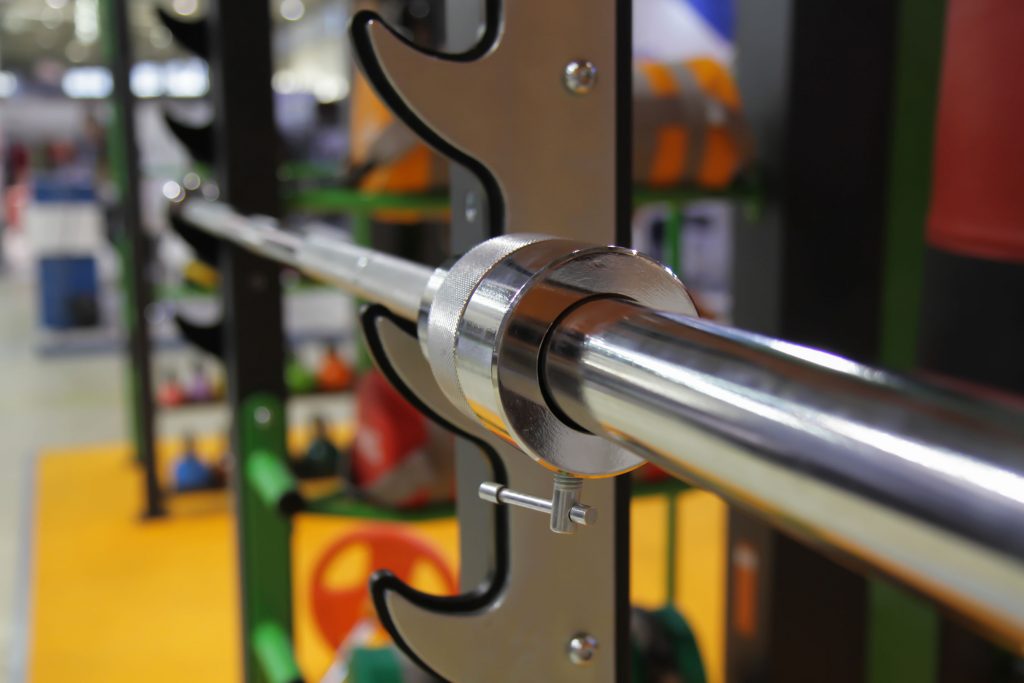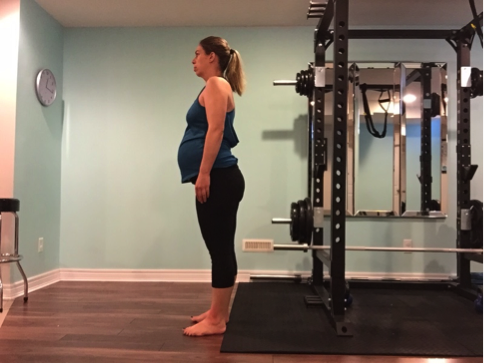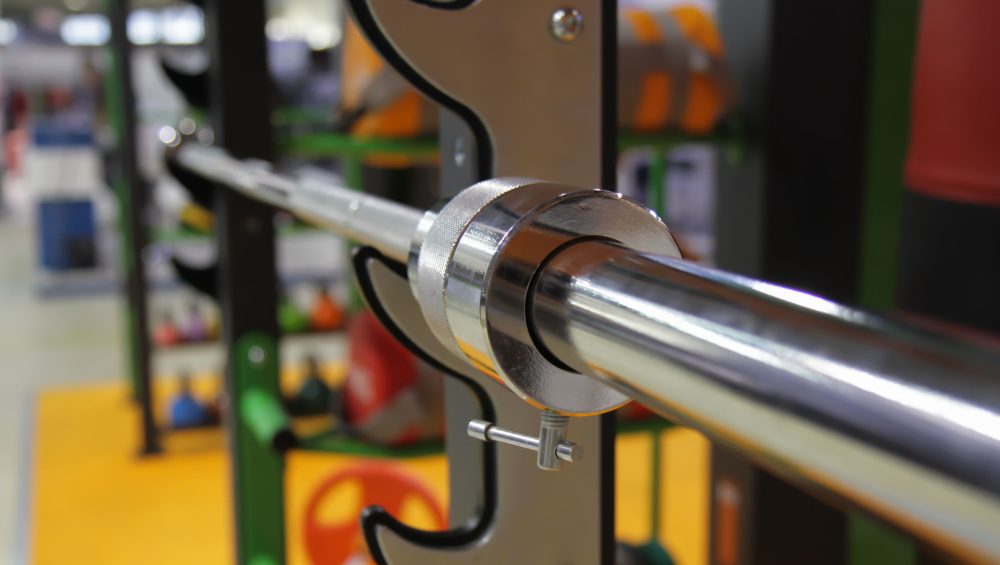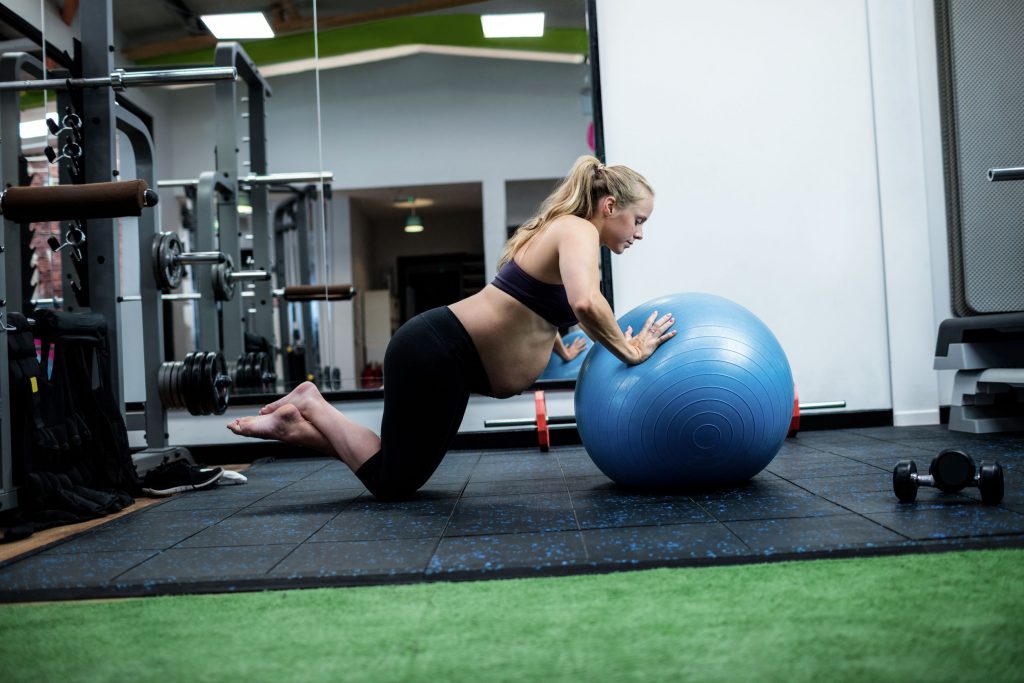Pregnancy can be an arduous and delicate time in a woman’s life. To be a bit more colloquial…shit goes down.
Shit goes down hard.
I’m a firm advocate of strength training during pregnancy. It’s a great way to keep the body healthy and strong during those nine months, and to (hopefully) expedite the recovery process once the little one arrives.
There’s a small sentiment out there that exists where women are told strength training is bad or altogether dangerous during this time, and that it should be avoided at all costs.
Lifting weights during pregnancy dangerous? No.
Lifting weighs during pregnancy different? Yes.
Today’s guest post by Pre and Postnatal Exercise Specialist, Terrell Baldock, helps to shed some light on the issue.
Squats!

How To Maintain Your Back Squat During Pregnancy
If you’ve been lifting for a while, you know the back squat is essential to any strength training program.
But What If You’re Pregnant?
Squatting will become a way of life in motherhood and you will need all of the squat training you can get during pregnancy. Squats are mostly known for their work in the lower body but they’re fantastic as full body movement as well.
A few years back, “I would have said absolutely no, there is no way you should be back-squatting during pregnancy.”
But I’ve come around a bit since then.
Instead of omitting exercises like the barbell back-squat all together, making modifications and learning how to safely execute a barbell back-squat is far more important.
The barbell back squat is fantastic to do during your pregnancy, but you will need to monitor your pelvic floor for any downward pressure as well as your overall stability.
You may also notice your “butt wink” creeping in. This is typically because as your belly is growing, additional weight is being placed onto the pelvic floor.
As a result, your hip flexors, adductors, and abductors tend to become tight and take on more work, plus your glutes become inactive due to the shift in your alignment.
In this article, I’m going to give you strategies to not only maintain your squat, but keep you back-squatting throughout your entire pregnancy.
Your Core
As your belly grows, your abdomen will begin the separation process known as Diastasis Recti. This is completely normal and there is nothing to fear, but you can minimize the effects and keep your hips more stable.

Diastasis Recti is classified as the unnatural separation of your left and right rectus muscles. This process is different for every woman, but research shows that 100% of women will have diastasis recti by their 35th week of pregnancy (Mota et al 2014).
Yes, you can still train your core during pregnancy, but this looks a little different than traditional core training methods. Personally, I like anti-rotation exercises like the Half-Kneeling Pallof Press because it provides both hip and core stability which is perfect for your entire pregnancy.
Many people commonly think of their core as the “six-pack” abdominal muscles, but it’s a bit more involved. Your “deep core system” is made up of your diaphragm, pelvic floor, multifidus, and your transversus abdominis and they need to work synergistically along with the glutes to provide a stable foundation for all of your movements patterns.
So if you happen to notice some coning, or tenting in your abdomen during your back-squat, you’ll need to address your lifting strategy.
Hip Mobility
Your hips can become tight to compensate for the weight of your growing baby. And this is a biggie for your squat pattern because that “butt wink” will be a result.
Not to worry my friend. If you see that “butt wink” it may not the end of your back-squatting days.
In this video, I’m 26-weeks pregnant and back-squatting 70 lbs in the 12 to 15 rep range. As I go into the eccentric part of the squat, you can see the “butt wink” almost right away.
Note From TG: To toss my keen coaching eye into the foray – and this is NOT to call out Terrell in any way, shape, or form – if you watch how she sets up to squat you’ll notice she starts with an aggressive arch (or anterior pelvic tilt) which means she’s likely running out of hip flexion “room” sooner than she normally has access to. As a result the lumbar spine is going to compensate by going into lumbar flexion (butt wink).
The “fix” may be to cue her to start with a little more posterior pelvic tilt first and then to squat with her hips more underneath her. Or, I can just STFU and recognize she’s 26 weeks pregnant and understand that things are a bit wonky at the moment….;o)
At 26-weeks in my most recent pregnancy, I had a “butt wink” in my back squat almost immediately. This is a good indication that I was dealing with muscle tightness in my hips.
At this point, I switched up my strategy by using goblet and sumo squats with kettlebells or dumbbells as well as incorporating soft tissue release of my hips, quads, hamstrings, glutes, abductors, and adductors.
To be perfectly honest, when I switched up my strategy, I had no intention of improving my back squat. I wanted to begin preparing my pelvis for childbirth by releasing the tightness, which is critical when it comes to labour and delivery.
Note From TG: Viola! Goblet Squat = more of an anterior load = anterior core turns on = posterior tilt = Tony does need to STFU.
However, at 33-weeks pregnant, I attempted a back squat and something pretty cool happened.
After down-training for several weeks, my squat improved. Same load, same rep rage and there was a significant difference in my squatting pattern.
Goodbye butt wink!
This means, you may not have to give up your back squat at all.
But if you notice your hips rolling under during your back-squat, it would be a great time to add some release work into your fitness regime.
Using a foam roller to roll out your hips and glutes are a great way to release the tightness. It may not feel good, so remember to breathe.
Your Breathing
A proper breathing technique can help to balance out the pressure in your core which will ultimately provide better protection to your core and pelvic floor. When you have a core and pelvic floor that is functioning well, you will have a strong and healthy foundation for all movement pattern including your back squat.
The breathing technique that you want to master along with your squat is a diaphragmatic breath with a light pelvic floor engagement or “kegel”.
- On the eccentric phase or on your way down, inhale deeply through your nose making sure you have good expansion through your rib cage.
- On the bottom of your squat, you’re going to begin your exhale through your mouth like your blowing through a straw, engage your pelvic floor, and then press yourself up. Julie Wiebe calls this “blow before you go” because this signals your brain to engage your core and pelvic floor naturally if your core system is functioning properly.
And there’s a lot more information in my Barbell Training For Pregnancy: Your 3 Step Guide For Maximizing Performance During and After Pregnancy.
It features simple and actionable steps to maximize your core and pelvic floor function, improve performance, and most importantly, avoid the complications that can arise from postnatal exercising.
Click here to access your free guide today.
Your Alignment
As your pregnancy progresses, you may find your pelvis starting to anteriorly tilt. Now, you want to nip this in the bud in your first trimester or as soon as possible because this can affect how you squat.
Not only that, but your alignment affects your breathing and your coordination.
Ideally, you need to maintain a neutral posture.
This means your ribs stacked over your hips. This keeps the diaphragm seated directly above the pelvic floor allowing it to work with the multifidus and the transversus abdominis together as a team. A neutral pelvic position will optimize the availability to the pelvic floor making it easier to for the pelvic floor to work in unison with the rest of the system. 
You know what else your alignment does?
It keeps your deep core system including your pelvic floor functioning optimally, helping to manage the intra-abdominal pressure. However, if you’re feeling downward pressure in your pelvis and your alignment is spot-on, it may be time to make modifications.
Here’s how to stand in neutral alignment in your back squat.
- Stand with your legs just outside hip width apart (or a narrower stance if that’s where you’re comfortable) and toes angled at about 15 degrees and knees slightly bent
- Squeeze your shoulder blades together, you don’t want the bar sitting on bone. It won’t feel good!
- Stack your ribs over your hips and make sure that your pelvis is in neutral position and not anteriorly tilted.
Load and Range Of Motion
Generally speaking, you can continue to use the same load you were using before pregnancy during the first trimester and early into your second trimester (if you’re feeling up for it, of course!).
However, when your belly begins to grow, you will need to monitor your squat for pressure on your pelvic floor and range of motion.
It’s best at this point to lighten the load.
Let’s say you’re working in the 8-10 rep range. Drop the weight to where you can lift 15 reps comfortably.
The goal isn’t to work to fatigue.
If you find that you feel pressure in the pelvic floor after lightening the load, decrease your range of motion so that you don’t come down as far. If that still isn’t helping with the pressure, it’s time to modify.
Listen To Your Body
This is the most important step to any movement during your pregnancy. If you feel overexerted, fatigued, dizzy, faint, or you need extra support in your belly, it’s best to lighten the load or swap your barbell for kettlebells or dumbbells.
Additionally, pay attention to your pelvic floor. If you’re feeling bulging, heaviness, pain or pressure, or leak a little–or a lot, it’s time to modify. If it doesn’t feel quite right, don’t do it.
Seeing a pelvic health physical therapist (pelvic health physiotherapist if you’re in Canada), is a great defense in your prenatal and postpartum training. They can get an internal perspective of how your pelvic floor is functioning, look for any pelvic organ prolapse, and give you the best possible guidance when it comes to prenatal training when it comes to your pelvic floor.
When troubleshooting your back-squat (pregnant or not) make sure you start off unloaded to train the squatting pattern properly along with all of the strategies listed.
First and foremost is safety.
I suggest not training alone and working or consulting with a coach who is trained in prenatal and postnatal exercise. Pregnancy isn’t the time to set personal records and egos need to be set aside. How you train during pregnancy matters in maximizing your postpartum performance, maintaining a well balanced pelvic floor, and keeping you injury free.
About the Author
 Terrell Baldock is a Prenatal and Postnatal Exercise Specialist in London, Ontario, Canada. She specializes in working with women with core and pelvic floor dysfunctions and prepares them for the demands of pregnancy, birth and postpartum recovery.
Terrell Baldock is a Prenatal and Postnatal Exercise Specialist in London, Ontario, Canada. She specializes in working with women with core and pelvic floor dysfunctions and prepares them for the demands of pregnancy, birth and postpartum recovery.
With over a decade of coaching experience, she trusted by Maternity Doctors and Pelvic Floor Physiotherapists as well as a regular speaker at the University Of Western Ontario.
If you have questions about training during pregnancy, feel free to reach out on Facebook, Instagram, or check out her website.





